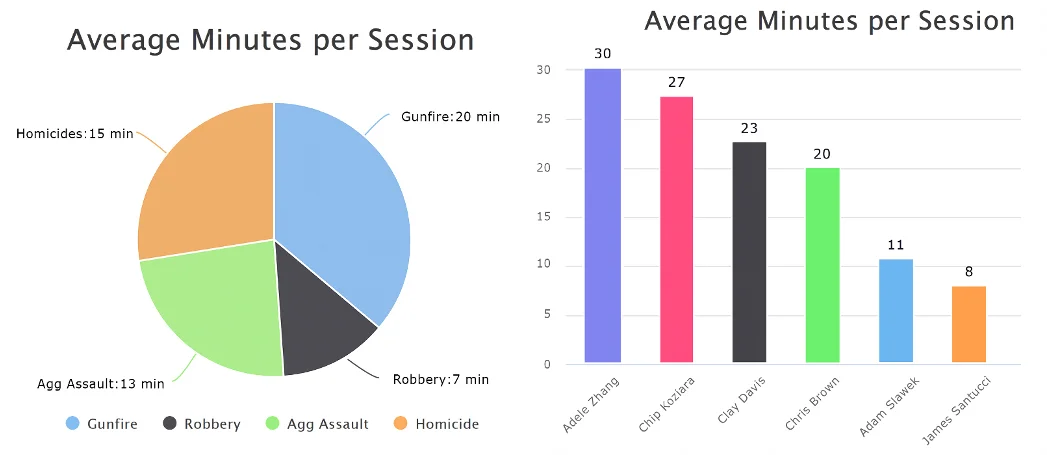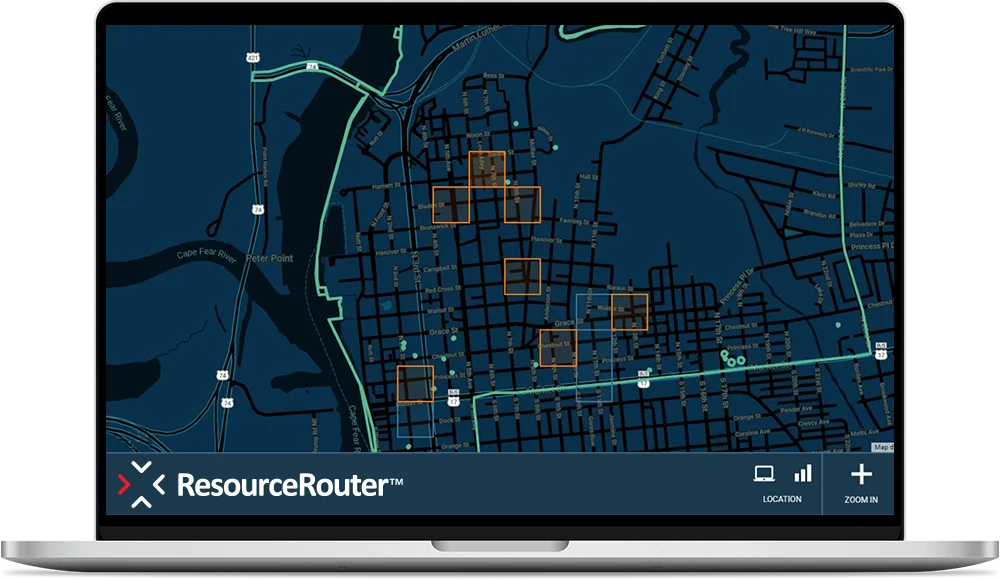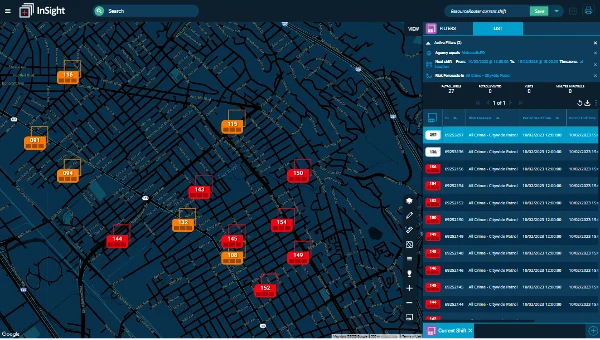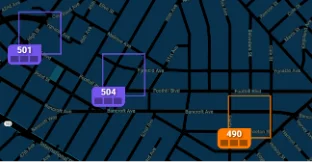Law enforcement agencies accumulate data hourly, daily, weekly, monthly and yearly. This includes not just police departments but Real Time Crime Centers (RTCC), Dispatchers and First Responders who collect data every time they respond to a call for service or interact with the public.
To an agency, data – and the insight it provides – is what makes it possible to address crime, build trust in communities and increase the effectiveness of your patrol efforts.
But in 2021, data is starting to become a problem that police departments can no longer afford to ignore. Especially after the past year—which saw violence increase in many cities despite lockdowns—agencies need a better way to manage and leverage data.
Fortunately, this is where a robust crime analysis program comes in.
What is a Crime Analysis Program?

Crime Analysts, Criminal Intelligence Analysts and Intelligence Analysts are titles that are regularly given to people who spend most of their time looking at data and connecting the dots. In this article, I will refer to these titles as simply analysts.
If you do not have a full-time analyst, many times you have sworn personnel who fill this important part of your policing efforts part-time. This works well, as I am a product of this category. The title is not important—but what is important is that someone is looking at the data and using that data effectively. Some departments have a completely civilian force or combined civilian-sworn personnel force. This practice is also very effective.
A crime analysis program’s Key Performance Indicators (KPIs) focus on current year crimes compared to last year and comparing this week with the prior week in a more linear process (7-day, 28-day, etc.).
A good crime analysis program includes three pillars:
#1. Crime prevention
#2. Outreach
#3. Inclusion
The reality is that police command is under extreme pressure to create trust in the communities they serve while reducing crime at the same time. A crime analysis program can help with this, but only if it’s grounded in modern concepts.
Modernizing Crime Analysis
Many times, analysis is grounded in concepts that worked decades ago. Today, these concepts or techniques may not work at all. Crime analysis programs need to become more professional with many disciplines.

This is because of today’s data complexity and the need to have visualizations of the data available near real-time. Additionally, police departments need reports, and the ability to identify issues daily with specialized, unit-specific self-service dashboards and daily briefings—all with a quick turnaround. Many of these capabilities are nonexistent in the old crime analysis paradigm.
To solve this problem, more and more midsize to large departments have hired data scientists and professionals with different disciplines to assist police departments with their data problem. However, delegating the strategy and tactical day-to-day to someone with no knowledge of policing can be unproductive if this idea is not deployed correctly. For this to work, you need to maximize the use of these skilled data professionals with your police personnel with street experience. The data expert may have only the knowledge of crime based on textbooks, but he or she can quickly learn from your officers and command. In a short time, you build a sound crime analysis program that can address your data and strategy.
There are also other more affordable and effective solutions available on the market designed specifically for police departments. These solutions address the data and strategy components—including Risk Terrain Modeling—without having to add personnel to the payroll and adjust the priorities of the department. It also replaces the need to have data experts looking at the data and adds a strategy for deployments with directed patrol boxes during each shift. Lastly, you can shift some of the time your sworn personnel spends on data analysis to focus on more important priorities in your department.
Depending on the size of your department and budget limitations, this type of solution is sound and highly effective—and a perfect fit for the modern era of crime analysis.
Simply put, the old methods of crime analysis are no longer enough. But what is the level of analysis that your department needs today? Why do you need to look at your data daily and plan your deployment strategy based on your data?
The current state of analysis in your police department may be satisfactory in many ways, but you may want to take things to the next level. The options for your analysis program are many, as you may already know, including:
- Expanding into community policing
- Building cases for your detectives by connecting the dots in your ballistic reports
- Preparing search warrants
Taking your analysis program to the next level will require additional training and development but it is not a journey for you alone. The tools you deploy to give shape to your crime analysis program should help you.
How to Build a Crime Analysis Program
Analysis is important in many other fields; for example, the financial industry. Why not take a similar approach to crime analysis? Here are some ideas of what can be at the core of your analysis program:
- Daily strategy for deployments. This should be for each shift.
- Crime patterns for certain crimes.
- Serial violence generators. Your serial shooters should be a priority.
- Offenders on parole or electronic monitoring.
- At-risk youth in hotspots for gun violence.
- Your gang population and territories that they are claiming.
- Gang conflicts and other conflicts that can lead to violent confrontations.
- Peak times and peak days for priority crimes. Aligning your deployments.
- Open retail spots for illegal drugs and drug houses.
- Post shooting follow-up which can involve other anti-violence organizations.
- Crime prevention patrols with community outreach.
- Motor vehicle thefts and recoveries of stolen motor vehicles. Analysis includes year, make and model of vehicles with analysis of known offenders in these areas and ALPR mission spots.
 Key performance indicators every Monday.
Key performance indicators every Monday. - Breaking analysis by day of the week:
- Mondays: Review of the weekend.
- Tuesdays: Robberies.
- Wednesday: Burglaries.
- Thursdays: Motor Vehicle Thefts and Recoveries.
- Friday: Plan for the weekend.
- If you have ShotSpotter®, daily analysis of the data to find high crime risk areas and clusters.
Setting priorities and eliminating the noise is very important in whatever your analysts are going to be involved in each day. Always involve the collective intelligence and expertise of your officers to make the intelligence cycle a success.
Lastly, what tools is your analysis team using?
Tableau and Power BI are the most modern tools in crime analysis. These Business Intelligence (BI) tools allow you to create dashboards that are interactive and can update live or daily with all your data. The learning curve is also not a problem with these two programs. No longer do you have to wait a month to get a map that, by the time you get it, crime has moved. Your analysis products can be fully automated and available when you are having coffee in the morning on your tablet or smartphone.
Conclusion
I touched on several areas that can guide you in evaluating your current crime analysis program. If you do not have one, you can start one even with your sworn personnel as part-time.
To maximize your crime analysis program, consider a solution like ResourceRouter™, patrol management software that meets most of the challenges mentioned in this article with machine learning-based directed patrols and a robust suite of reports for effective crime analysis. If you are interested in having a third party evaluate your current crime analysis program, we are happy to help you! We have over 300 years of collective law enforcement experience just in the Customer Success team alone.
ResourceRouter is a community-first patrol management solution that uses machine learning to direct officers to high-risk locations to prevent crime before it occurs. Command staff can access a robust suite of reports on officer statistics to help optimize patrol strategies and ensure officer accountability.




